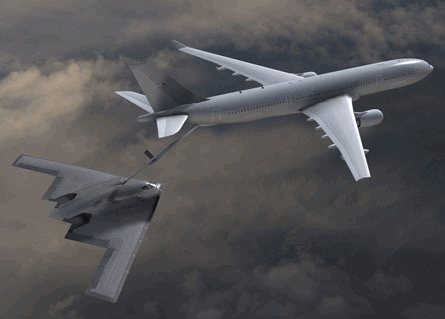EADS North America chief executive Ralph Crosby has offered a glimpse into his company's plans for consolidating on its recent success in winning a share of a massive US Air Force contract to convert 179 Airbus A330-200s into KC-45A tankers.
That deal, primed by EADS partner Northrop Grumman, remains in limbo pending the resolution of a formal protest and an aggressive lobbying campaign launched by losing bidder Boeing. But despite a political backlash that greeted the USAF's tanker selection, Crosby is confident sales of Airbus - and other EADS-built airframes to US military customers has only begun.
 |
|---|
And EADS is actively positioning at least four other European aircraft to win US military contracts within the next five years.
The candidate airframes include the A400M airlifter, a modified A321 for surveillance missions and two helicopters - the NH Industries NH90 and the Eurocopter AS332 Super Puma - for utility and support roles. Even further, Crosby, who lost a battle in 2002 to succeed Kent Kresa as Northrop's boss, hopes to eventually fashion an in-house capacity to integrate systems rather than merely supply platforms.
Crosby also acknowledges "serious interest" in Finmeccanica's pursuit of DRS Technologies, although the two firms have now announced a $5.3 billion tie-up.
But EADS is likely to continue to seek acquisitions in the defence electronics sector as a step toward building systems integration expertise.
Crosby says the A400M occupies a sweet spot in the US market that may emerge after 2013. Airbus foresees an interim airlift need emerging during an expected 10-year gap between the USAF's planned shutdown of Boeing C-17 production and development of a next-generation airlifter.
As to whether the USAF contract would require Airbus to switch engines to meet US sourcing laws, Crosby says: "The A400M will meet the 'buy American' requirement for US content."
The A400M is powered by the 11,000shp (8,200kW) Europrop International TP400. Europrop is a collaboration between Rolls-Royce, MTU, Snecma and ITP.
But there is at least one North American-based alternative engine. Pratt & Whitney Canada was originally selected by Airbus to power the A400M with a turboprop based on the PW800 engine family.
The A321, meanwhile, is being positioned as a candidate to replace the US Navy EP-3E Aries II fleet, an electronic intelligence platform. Crosby describes the A321 as an ideal candidate to compete against a new version of the Boeing 737-based P-8A for the EPX contract, but declines to elaborate.
Finally, either the NH90 or the A332 could potentially compete for a long-delayed contract called the common vertical lift support platform (CVLSP) to replace ageing Bell Helicopter UH-1 helicopters, Crosby says.
That mission is focused on dispatching 17-man security teams to far-flung launch silos for intercontinental ballistic missiles operated by US Space Command.
EADS believes it is competitive only in the event that the USAF keeps the Boeing HH-47 Chinook as a combat search and rescue helicopter. That contract remains in dispute. If either the Lockheed Martin/Agusta Westland VH-71 or the Sikorsky HH-92 eventually wins the CSAR-X order, EADS believes its offerings would no longer be competitive for the CVLSP.
Since joining EADS North America in September 2002, Crosby has grown the US-based business unit's annual revenues by nearly 100% to more than $1 billion and captured two major - and surprising - production orders from the US Department of Defense.
EADS's most visible victory in the US market by far is the KC-X contract, but the company is desperate to call attention to a more obscure - but significant - helicopter order by the US Army.
The UH-72A light utility helicopter is simply a redesignated Eurocopter EC145 now in production in Columbus, Mississippi. As a strictly non-combat-rated aircraft, the UH-72A is intended to fill peacetime roles so the army can dispatch all available Sikorsky UH-60s into combat.
Col Neil Thurgood, director of the army's utility helicopters office, has praised the responsiveness of EADS.
"The thing that I see is their commitment to our soldiers," Thurgood says. "When there is an issue, there is a response."
The light utility helicopter offers an important proving ground for EADS North America to burnish its reputation as a reliable supplier. The USAF's source selection team on KC-X contacted the army's acquisition officer for the light utility helicopter to learn about the company's performance record. Thurgood will not elaborate on the army's response, but says it was mainly positive.
Crosby is keen to keep that reputation intact: "We're only as good as our last screw-up."
Source: Flight International























